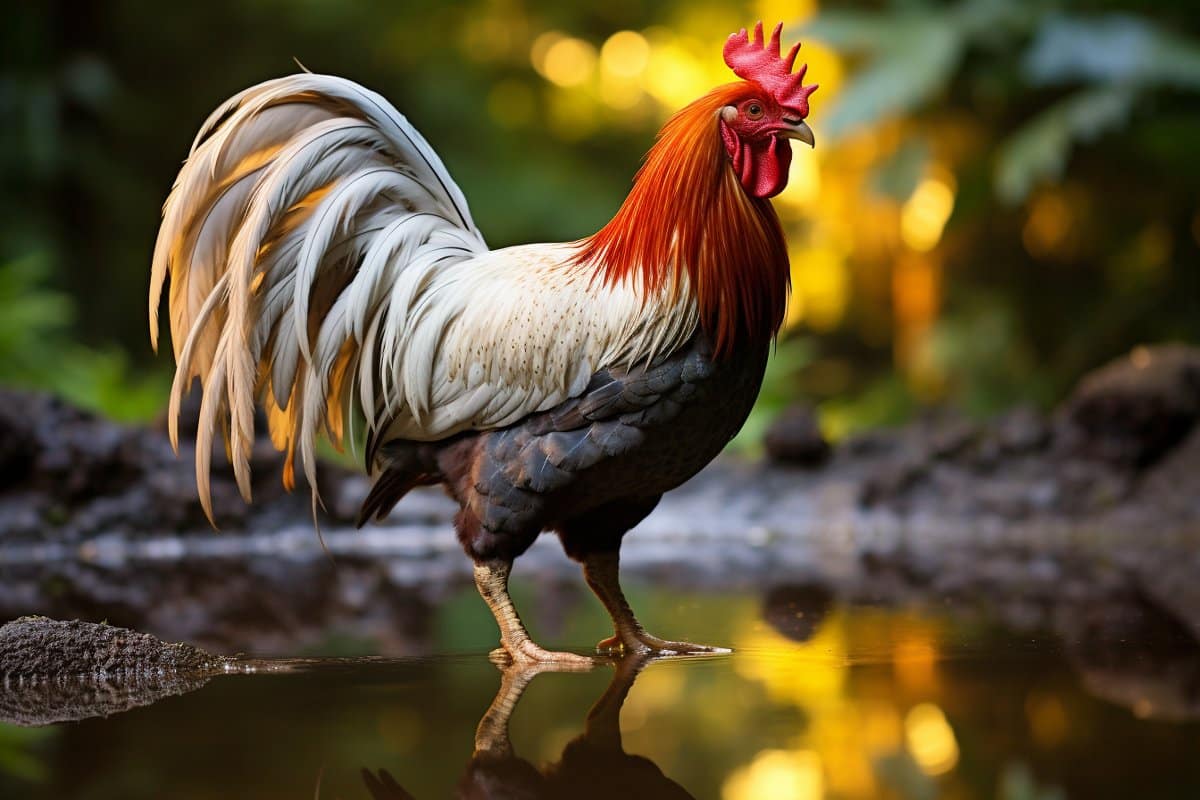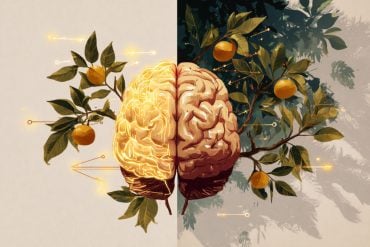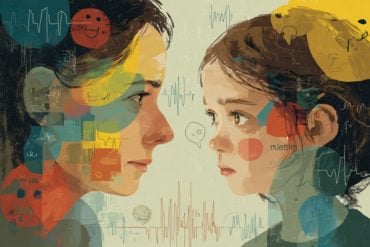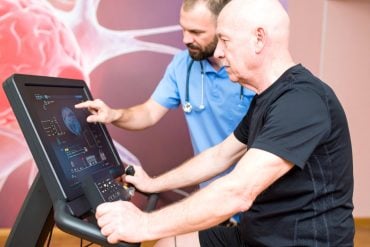Summary: Chickens, often dismissed as simple-minded, are now at the forefront of a study on self-awareness.
Researchers have observed roosters potentially recognizing themselves in mirrors. However, the success of this recognition depends greatly on the experimental conditions.
The study challenges traditional tests for animal self-awareness and highlights the need for more ecologically relevant experiments.
Key Facts:
- Roosters may be able to recognize themselves in a mirror, a potential indicator of self-awareness.
- The classic “mark test” for self-recognition might not be applicable to all animals, and the context of the test matters greatly.
- Roosters typically give alarm calls in the presence of a conspecific when threatened by a predator, but this behavior changed when confronted with their own reflection.
Source: University of Bonn
Scrape, cluck, lay eggs—that’s it? Anyone involved in chicken farming knows that the animals are capable of much more.
Researchers at the Universities of Bonn and Bochum, together with the MSH Medical School Hamburg, have found evidence that roosters could recognize themselves in a mirror.

Whether this is successful, however, depends on the experimental conditions—a finding that points beyond the experiment with roosters and could also be of importance for other animal species.
The study is now published in the journal PLOS ONE.
“Whether animals can recognize themselves and thus have self-awareness is one of the central questions in behavioral research,” says doctoral student Sonja Hillemacher, who together with her colleague Dr. Inga Tiemann has been scientifically investigating the husbandry of chickens for years at the Institute of Agricultural Engineering at the University of Bonn.
The idea of experimenting with chickens in front of a mirror came to the scientists together with Prof. Dr. Dr. h.c. Onur Güntürkün from the Department of Biopsychology at the Ruhr University in Bochum.
A common test for self-recognition in front of a mirror is the so-called “mark test.” For example, a colored mark is placed on the animal’s head that the individual can only recognize in front of a mirror.
If the animal begins to explore the marked area on its body in front of the mirror, this is considered proof that it has recognized its reflection as itself.
However, this test does not always work. Some animals that are believed to be self-aware take no notice of the mirror. Perhaps because they feel uncomfortable in the “artificial” experimental environment?
Adapting the experiment to ecologically relevant behavior
“Our goal was to conduct the mirror test in an environment that is better adapted to the ecologically relevant behavior of the chickens,” says Dr. Inga Tiemann. Prof. Onur Güntürkün came up with the idea of using a natural behavior of the feathered fowl for the experiment:
“Some chickens, but especially roosters, warn their conspecifics by special calls when a predator—such as a bird of prey or fox—appears.”
On the other hand, if the roosters are confronted with the predator alone, they usually remain silent to avoid attracting the attention of the predator themselves and becoming victims.
“The alarm call is the perfect behavior to integrate into a more ecologically relevant test of self-awareness,” says the biopsychologist from Bochum University.
The research team first wanted to check whether the roosters really emit alarm calls in the presence of a conspecific and stay silent when they are alone.
For this purpose, the researchers from the University of Bonn set up a test arena on the Campus Frankenforst. A grid separated two compartments through which the roosters could see each other. Then a bird of prey was projected onto the ceiling of one compartment.
The researchers tested 58 roosters. To statistically validate the results, the experiment was repeated three times with each rooster. In total, the roosters emitted 77 alarm calls in the presence of a conspecific—but only 17 when they were alone.
“Some of the animals are bolder, others more fearful,” says Sonja Hillemacher.
“But the result shows that most roosters do indeed alert in the presence of a conspecific when a predator is in sight.”
The next step was to place a mirror between the two compartments instead of the grid. How did the roosters respond in the presence of their mirror image and a bird of prey? Again, the test was performed three times with each animal. In all, only 25 alarm calls were emitted during 174 trials.
“This proves that the roosters did not mistake their reflection for a conspecific,” says Sonja Hillemacher.
The result is an indication that the roosters possibly recognized themselves in their mirror image. However, there is at least theoretically the possibility that the animals saw in their image a strange animal that mimics their own behavior, and therefore the alarm call was omitted.
“Here are still further investigations required,” adds Inga Tiemann. For comparison, the team also performed the classic mark test: Here, the roosters showed no behavior that would indicate they recognized themselves in the mirror.
The research team sees clear evidence in the results that the classic mirror-mark test yields more reliable results when the behavior of the particular species is embedded into an ecologically relevant context.
“In the classical situation, a rooster may not show self-recognition,” says Onur Güntürkün. “But when a predator threatens him, it becomes clear that his reflection is not another rooster, but himself.”
This approach could also be relevant for other animal species. Further research on self-recognition and self-awareness in animals is also an important basis for the discussion on animal rights and animal welfare, the researchers said.
About this self-awareness research news
Author: Sonja Hillemacher
Source: University of Bonn
Contact: Sonja Hillemacher – University of Bonn
Image: The image is credited to Neuroscience News
Original Research: Open access.
“Roosters do not warn the bird in the mirror: The cognitive ecology of mirror self-recognition” by Sonja Hillemacher et al. PLOS ONE
Abstract
Roosters do not warn the bird in the mirror: The cognitive ecology of mirror self-recognition
Touching a mark on the own body when seeing this mark in a mirror is regarded as a correlate of self-awareness and seems confined to great apes and a few further species. However, this paradigm often produces false-negative results and possibly dichotomizes a gradual evolutionary transition of self-recognition.
We hypothesized that this ability is more widespread if ecologically tested and developed such a procedure for a most unlikely candidate: chickens (Gallus gallus domesticus).
Roosters warn conspecifics when seeing an aerial predator, but not when alone. Exploiting this natural behavior, we tested individual roosters alone, with another male, or with a mirror while a hawk’s silhouette flew above them.
Roosters mainly emitted alarm calls in the presence of another individual but not when alone or seeing themselves in the mirror. In contrast, our birds failed the classic mirror test. Thus, chickens possibly recognize their reflection as their own, strikingly showing how much cognition is ecologically embedded.







